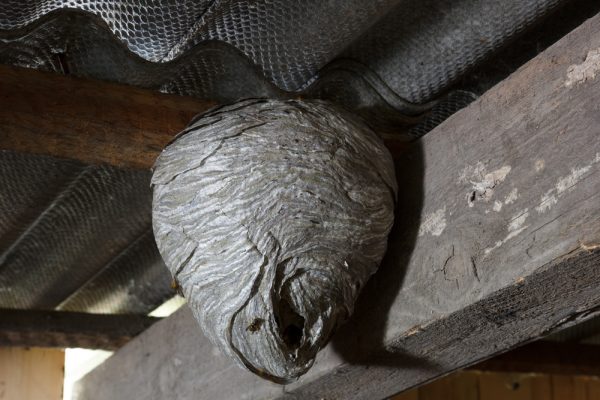
Most of us are able to tell the difference between a honey bee and a wasp. Honey bees tend to have thicker bodies with less distinct coloration and a fuzz covering their bodies. On the other hand, wasps are sleeker with more elongated bodies, intense black and yellow coloration and no hairs on their bodies.
However, when you find a nest on your property, chances are that you won’t care much what kind of an insect it is; most of us just want these stinging insects away from our homes and from our families, especially if you or someone close to you are allergic to their stings. Water, fire or physical attack on the nest is never the solution against these insects. If you are facing this problem, you can just contact http://beebusters.com/ and have them removed. Still, if you want to know what kind of a pest has infested your home, here is a handy list how to differentiate between the two.
Wasp Nest
There are many different types of wasps in the world, but the most common ones you might encounter on a summer day in the USA are yellow jackets and paper wasps. Even though they are separate species with pretty distinct physiognomies, their nests are fairly similar Even though the places they choose are different. They use a papery material of their own making which they make by chewing wood and mixing it with their saliva. Most wasps are territorial when it comes to defending their nests, so it’s best not to disturb the nest in any way and call professional wasp removers as soon as possible.
Paper wasp nests tend to be open like an umbrella and show the exposed interior structure which consists of interlinked hexagons. This kind of a structure makes the wasp nest durable and sturdy while still being lightweight. Paper wasps tend to live in smaller colonies of about a hundred individuals. Yellow jackets tend to be more secretive and they prefer their nests to be out of reach of predators and prying eyes. That’s why they choose closed areas like mailboxes or the insides of walls for their homes. Seeing wasps fly in and out of some secluded area is almost always a sign of a wasp nest inside. Keep in mind that a single nest of yellow jackets can have several thousand individuals, so keep your distance.
Bee Hives
Bees create their homes from a waxy substance which they secrete. Just like wasps, they have opted for the sturdy and practical hexagonal cells called honeycombs. These are used both for raising their young and for storing pollen and honey which the bees collect and produce. For that reason, most bee hives are closed off with only one entrance which they will defend fiercely.
Bees tend to choose an elevated position which is easily defendable from any predators. For instance, small crevices in rocks or hollows of trees are ideal for this purpose. However, in some parts of the world, particularly where the temperatures are high throughout the year, bees can also choose to create a nest hanging from a tree branch.
Another difference of bees from wasps and hornets is that bees can produce honey. The production of honey is one of the reasons why beekeeping has become so popular in many parts of the world. Beekeepers use bee frames to house their bees and to collect honey. These frames are made of wood, plastic or aluminum. They are designed to hold the wax, honeycombs and brood cells of honey bees.
Hornet Nests
If what you have seen doesn’t match the description of either a wasp nest or a bee hive, you may be faced with a slightly more dangerous possibility – a hornet’s nest. Hornet nests tend to be bigger than either wasp or bee dwellings, in accordance to the size of the insects inhabiting it.
Hornet nests are made of a papery substance just like wasp nests, but they are completely enclosed like a bee hive. However, they resemble a football both in size and in shape. Hornets are extremely territorial and will defend their territory from any perceived threat. What’s more, they have attack pheromones which will call their fellow hornets. So, if one hornet attacks, the whole nest is alerted and becomes agitated and attacks. That is why hornet attacks are so dangerous.
Approaching a nest of a stinging insect is never a good idea without some kind of protective gear, which is why removal of these structures and animals is always best left to professionals who have all the necessary training and equipment.